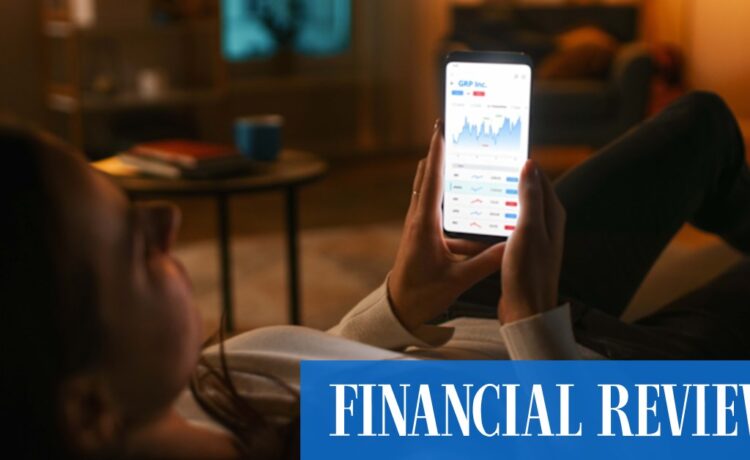Justin Grossbard, co-founder of CompareForexBrokers, says the profile of Australian traders is shifting. “Share trading remains the most popular form of trading with 34 per cent of adults holding shares. What has changed is that more investors are trading overseas shares such as Amazon, while younger people are trading small quantities,” he says.
New low-cost brokers including Robinhood and Stake have helped drive this trend, while social media has created its own momentum.
“Platforms such as TikTok are acting like a free stockbroker, with influencers sharing their recommendations daily,” Grossbard says.

Justin Grossbard, co-founder of CompareForexBrokers.
Cryptocurrency has also become part of the picture, with 15 per cent of adults now holding some digital currency. By contrast, forex remains a niche activity, with fewer than 1 per cent of retail traders using leveraged CFDs. Within that small group, however, competition among platforms is intense.
Grossbard says automation has changed trading practices more than anything else. “The majority of day trading is now done algorithmically,” he says.
“Traders can either easily make their own programs, purchase them from marketplaces or copy trade other traders.”
In Australia, where overseas market hours often overlap with the early morning, automation and stop-loss orders are particularly valuable. “This is why automation and tools such as stop-loss orders have become so popular here. Trading can remain active while Australians are asleep,” Grossbard says.
Mobile trading has further altered habits. “55 per cent of forex trading is done on mobile. That number increases to 56 per cent for share trading and 64 per cent for crypto,” Grossbard says. For many, portfolio management has become part of the daily phone routine.
Costs and challenges
Despite the new tools, trading costs remain decisive. “Currency conversion fees are becoming the biggest charge when trading. For example, when trading on the Nasdaq, brokers need to convert AUD to USD and this conversion rate is often poor,” Grossbard says. Large banks are often the most expensive, while specialist brokers may offer sharper rates.
Spreads – the difference between buy and sell prices – are another cost traders must weigh carefully. Grossbard says published averages should be checked closely before choosing a provider. In cryptocurrency, most platforms charge a commission on every trade, which can quickly add up.
Beyond cost, brokers are differentiating themselves in new ways. Some emphasise copy trading, where users can mirror the strategies of experienced investors. Others focus on specific markets, such as crypto CFDs. “Generally, platforms will differentiate based on the instruments you can trade, the ways you can trade, and additional features such as market insights and alerts,” Grossbard says.
Educational resources are another differentiator. Some brokers invest heavily in tutorials, webinars and market commentary, while others provide little beyond a basic interface. For new traders in particular, access to plain-language explanations can be just as valuable as tight spreads or advanced charting tools.
Market volatility has also shaped behaviour. Gold is one example where heavy coverage has spurred trading interest. Tariffs in the US have produced similar swings. “The increased volatility in 2025 has also led to more traders using risk management tools when trading,” Grossbard says.
A trader’s perspective
For Melbourne-based trader Max Adler, broker selection came down to trust and fit. His trading journey began at 13 when he was given cryptocurrency for his birthday. His stake in one coin, dogecoin, rose from $250 to more than $20,000 when he sold it.
“That success really excited me about the prospects of trading, so when I finished VCE and had the time, I decided to try other forms of trading including forex,” Adler says.
As a newcomer, he wanted a provider based in Australia and chose Eightcap after comparing spreads and crypto offerings. “According to my research, spreads were lowest there, which influenced my choice,” he says.
Adler trades mainly at night, when global markets are busiest. “Generally I am a night owl, which is ideal for trading UK and USA sessions,” he says. But he does not trade daily. Some weeks he is active every night; other times he takes a month away. The flexibility fits his work and study schedule.
He admits to early misconceptions. “I always thought AI trading was something only experienced traders had access to,” says Adler.

Melbourne-based trader Max Adler.
“What shocked me was how easy it has been to either purchase AI programs or create them myself using programs like Claude. I have found it really rewarding to back-test the expert advisor programs I have made to see how they would have performed in the past.”
Looking ahead, he expects trading will take a smaller role as he moves into full-time work, but he sees it as a foundation for his future. “My plan is to grow these holdings, which should lead to me having enough for a deposit on my first home down the track,” he says.
Adler’s story reflects the broader trend. Trading has become part of modern financial life, enabled by technology and fuelled by the search for extra income. The crucial question for this new wave of investors is not whether to trade, but which broker can provide the transparency, tools and reliability to make it worthwhile.
To find out more, please visit CompareForexBrokers.





